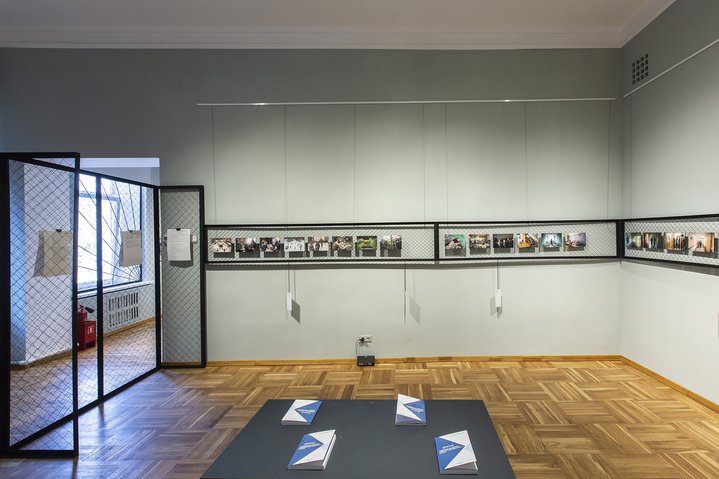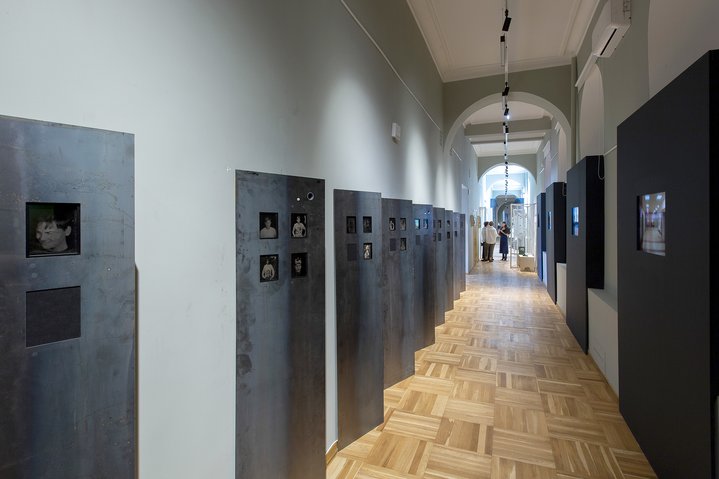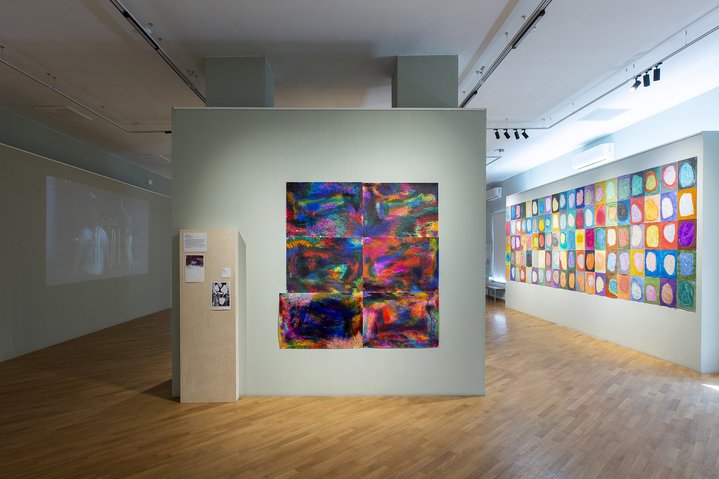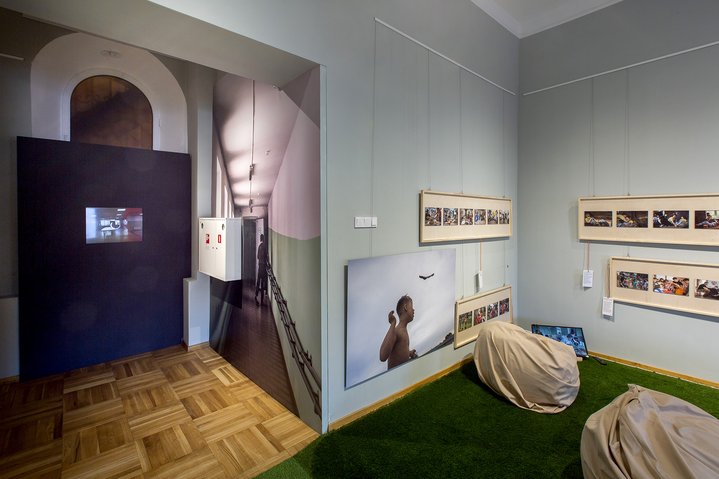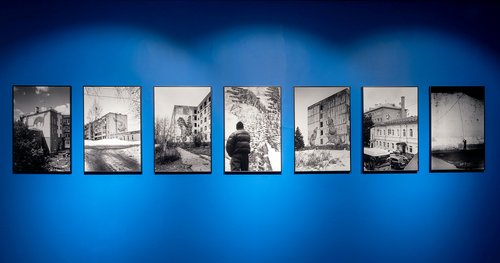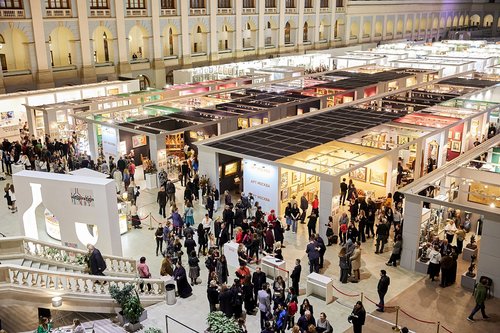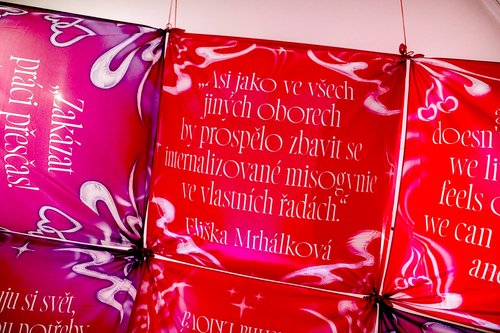This fascinating exhibition in Nizhny Novgorod asks which side of the psycho-neurological fence we live on.
It’s called ‘PNI. The Most Closed Exhibition in Russia’, at Nizhny Novgorod State Art Museum, a joint project of the renowned war photographer Yuri Kozyrev and the artist Alexei Sakhnov featuring over three hundred works by neurodiverse artists from Russian psychiatric care homes (known by the acronym PNI). Kozyrev, who was born in 1963, is a six-time winner of the World Press Photo for his powerful pictures from Chechnya, Iraq and Beslan, and 48-year-old Sakhnov has been a resident of a PNI in Peterhof since he was a teenager.
Between 2020 and 2023, Kozyrev filmed numerous videos and took photographs in PNIs across the whole of Russia. His documentary work shares the current show with Sakhnov’s sculptures, works on paper and multimedia objects by other PNI residents. It also has an educational dimension with lectures, master classes, and training sessions running alongside the exhibition.
Curated by Georgy Nikich, one aim is to destigmatize the sensitive subject of those living in PNIs by raising awareness of the many sociocultural benefits from integrating and recognizing the unique contributions neurodiverse residents of PNIs have to offer. Also behind the exhibition, Anna (Nyuta) Federmesser, who heads up the Moscow Multidisciplinary Centre for Palliative Care well known for her humanitarian work, describes the exhibition as “a cultural event that shows us all a parallel world of people living with mental disabilities.” She sees it as a vehicle for change: “Both museums and PNIs exist as social institutions. PNIs are for special people where museums are for everyone. The exhibition shows what happens when they begin to move towards each other,”. The show itself is created with small compartments and long corridors, reminiscent of a hospital.
On arrival, visitors are greeted by a cage with worn hospital clothing and shoes, the kind troubled inmates might wear, putting the spotlight on us as potential residents, what disorders might we have which could lead to us being institutionalised? It is as if there is an absence of clear borders separating the worlds of museum and psychiatric institution, further emphasised when the walls of the museum featuring videos and other works abruptly transform into the hospital corridor portrayed in one of Kozyrev’s large scale photographs. It also works the other way around: Kozyrev arranged a kind of amateur fashion shoot for the inhabitants of one care home. He dressed them to look like they might be your neighbour or friend, forcing gallery visitors to view themselves in the mirror. In these photos, the inmate are having fun. Again, they could easily be us!
The next three rooms, painted with wire fencing on the wall, document different aspects of life ‘behind the walls’, the walks, meals, conversations, conflicts, and sense of longing inmates experience. In these rows of small scale photographs, grouped by theme we are again confonted by the suspicion that although we believe ourselves to be healthy and capable, this might be a disillusioned self-diagnosis. The last room on the ground floor with an artificial lawn provides some respite from the emotionally drain, it resembles a playroom and contains photographs of social activists and volunteers from ‘Zones of Care’, one of Anna Federmesser’s initiatives to enrich the lives of inmates. The show continues on the first floor where the second part is titled ‘Museum of Perspectives. Open Storage’, consisting of works created in the art studio of the St. Petersburg charity organisation ‘Perspectives’, a group that has been working inside PNI No. 3 in Peterhof since 2001.
“Artists normally exist in a ‘secular’ reality: they exhibit, belong to the Artists’ Union, they sell their art. But the artists here find themselves on the margins of the society and do not think about the art market or money. Their creativity comes naturally and most do not know the history of art or the contemporary context. They have no idea of a career,” exhibition curator Nikich says. “Should they be defined as patients or artists? Their art is pure self-realisation, that overcomes their limits and goes straight beyond the boundaries of their own lives.”
A success story, Yulia Kosulnikova (b. 1994) is already a well known artist in the Russian contemporary art world. She makes art from her surroundings, paints and draws a hospital ward or the everyday life of her facility and has already been invited to participate in the Urals Industrial Biennale and currently has a solo show at the Jewish Museum and the Centre for Tolerance in Moscow. Her work is on display in the collection of the Russian Museum.
While the curator points out that although these artists are far removed from the artistic context, their works vividly represent contemporary artistic strategies, from Art Brut to conceptualist documentation, the codification of reality and media art. One outstanding example is the spectacular paintings of Ilgar Najafov, who tragically died in 2021 of coronavirus at the age of 47. His paintings are full of colour, life and movement.
At the exhibition opening, visitors and artists (inmates), accompanied by their volunteers, mingled freely, indistinguishable from one another. As curator Nikich concludes: “every free person should feel [that he or she is] the master of his or her own fate and this should not be the fate imposed on him or her by an organisation. This is ultimately what this exhibition is all about.”
The article was first published on the website of The Art Newspaper Russia on April 10, 2024.
PNI. The Most Closed Exhibition in Russia
Nizhny Novgorod State Art Museum
Nizhny Novgorod, Russia
March 29 – May 19, 2024







